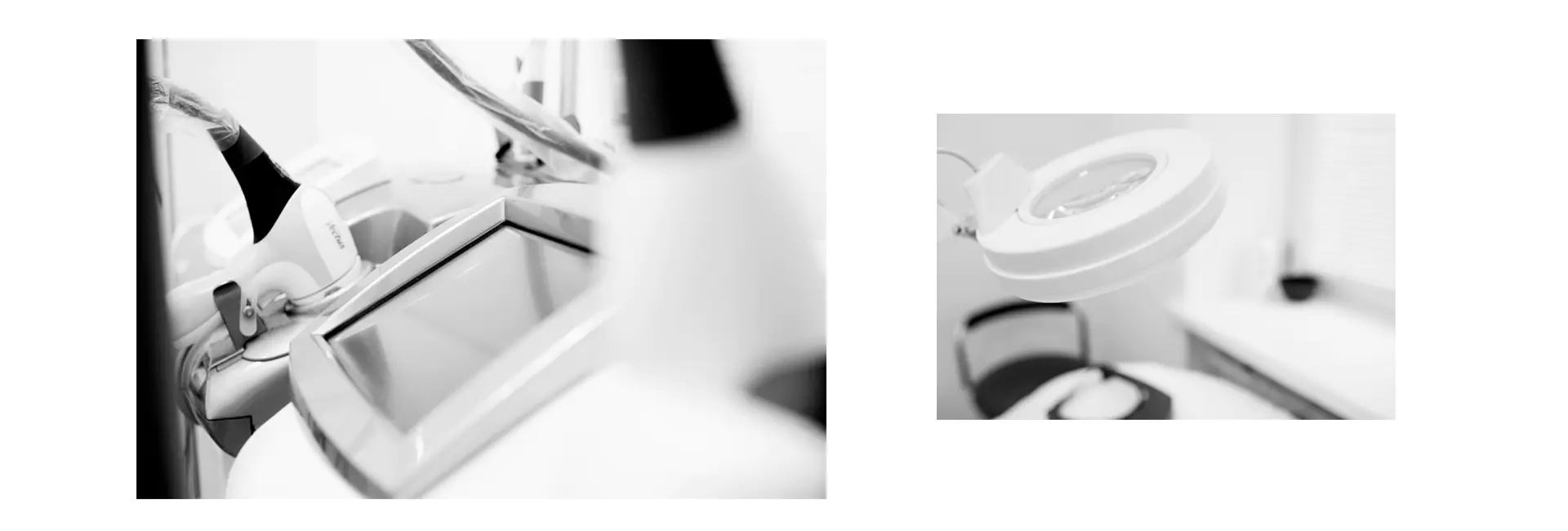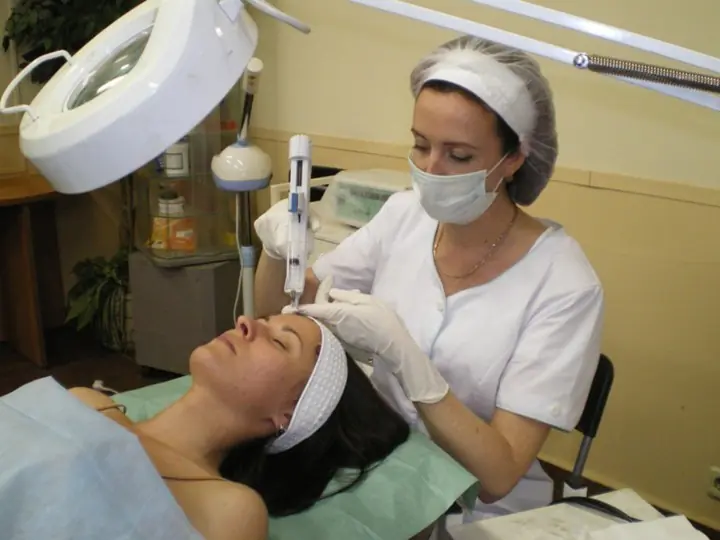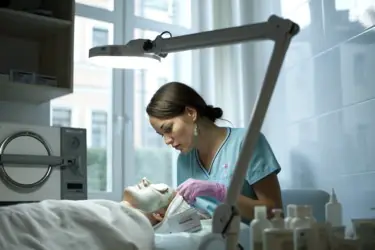Chief physician of the Rosh Medical Center Lyubov Khachaturyan on common mistakes when choosing cosmetics
Photo: Lisa Melina,
Konstantin Mitrokhov
Avoid consulting a doctor
Nowadays, most people learn everything from the Internet and do not attach much importance to consultations with a specialist. This is the very first and most common mistake. If you decide that it’s time to take a professional approach to facial skin care, be sure to go to a dermatocosmetologist. He will give recommendations on skin type and condition, prescribe the necessary procedures and advise home care.
If this is not possible, ask yourself a few questions: is your skin healthy or does it have rashes, are there any flaking and redness, have you ever been allergic to cosmetics, does your skin get oily during the day, can you do without cream after washing with plain water? By answering them, you will understand what kind of skin you have: oily, dry or sensitive. Afterwards you can choose cosmetics.

Lack of a systematic approach
The skin is our largest organ, and we need to take care of it systematically, that is, daily. In the morning, your beauty ritual should be as follows: wash according to your skin type, toning lotion, day cream, protective and restorative, and cream with SPF (minimum 15-30). In the evening - wash, moisturizing facial milk, regenerating cream, with all this taking into account your skin type. Remember also to care for the neck area, upper and lower eyelids. Many companies make products for these areas in the form of a cream or gel. Failure to follow basic step-by-step care leads to skin problems.
Forget about additional skin hydration
The older we are, the more moisture we lose. After 27 years, the skin needs additional antioxidant and moisturizing serums in combination with professional treatments. People often forget about this. If you have problem skin, you don’t need to experiment or listen to friends’ advice on choosing moisturizers. The sooner you see a doctor, the sooner you can use care products that will truly replenish the lack of moisture in your skin.

Use foundation every day
I always ask patients not to use foundation every day (even BB or CC), but to limit themselves to powder: the skin breathes and the pores do not get clogged. If you turn to professional makeup artists, it is advisable that the makeup be done with your own brushes and pencils. Otherwise, bacteria from another person's skin may end up on your skin, which can lead to irritation, redness, or even breakouts.
Mixing cosmetics from different brands
The most common mistake when choosing skin care cosmetics is using products from different brands. I don't recommend doing this. All funds must be from the same company. You can’t take a cleansing gel from one manufacturer, a day cream from another, and a night cream from a third. Buy one brand line and use it. At least the preservative in cosmetics will be the same, and you will get less chemicals.
Ignore the composition of cosmetics
Decorative cosmetics should also be selected according to your skin type. Read the label carefully, even if it requires a magnifying glass. The composition should not contain harmful ingredients (their lists are on special websites).

It’s wrong to get acquainted with new products
If you have sensitive skin, do not buy the entire brand line at once. Start getting to know the brand by purchasing your regular day cream. Apply it to the same place for 3-4 days (delayed allergic reactions occur). And if all is well, you can purchase the rest of the products from the line. A mistake is to test a small amount of cream on your wrist to feel the consistency and smell. Every second person in a cosmetics store does this, but believe me, even the most experienced specialist will not be able to assess the composition and effectiveness of the product in this way.
Use cream without results
It is not enough to simply not feel skin tightness and discomfort after applying the cream. You should see changes for the better. Progress must be made in the quality, color and even density of the skin. If this is not the case, look for other cosmetics.

Use a lot of decorative cosmetics
Naturalness is in fashion, but many women and girls still go overboard with makeup. If the skin is healthy, there should be a minimum of decorative cosmetics. Choose only one accent - eyes or lips. Don't let it be seen that you're wearing makeup.
The opinion of the editors may not coincide with the opinion of the speaker.
Checklist of a basic set of cosmetics and devices for a successful start.

Many cosmetologists have to buy a “starter” set of cosmetics and equipment: those who work for hire (masters often work in salons using their own cosmetics), receive clients at home, and, of course, those who are thinking about how to open a private cosmetologist’s office.
As with any shopping trip, you'll need a shopping list. Without it, you risk buying a lot of unnecessary things and, at the same time, missing positions that are vital for a professional.
We have compiled the following list for you: use it as a checklist for equipping your office.
It contains the most necessary or popular cosmetics today, as well as inexpensive and at the same time popular devices.
Depending on your professional plans, you can make purchases according to one of the three blocks of our list (face, body, depilation) or use the entire checklist.
Block No. 1: face
Estimated price of the starter kit: from 50,000 to 150,000 rubles (depending on the brand)
When selecting cosmetics for facial care, remember that the main clients of a cosmetologist are people aged 30 years and older. This means that the main emphasis should be on anti-aging care products.
- a set of cleansing products for washing, removing makeup and cleansing the skin: tonic, milk, gel for cleansing the skin. Pay attention to two-phase products based on water and oil;
- a product for deep cleansing of the skin: a classic scrub, gommage and always a product containing AHA acids (fruit acids);
- plasticizing (alginate) masks. It’s good if your set contains several of these masks with various additives. This way you can solve various problems: facial modeling (main), skin moisturizing, normalizing oiliness, skin whitening and lightening, strengthening blood vessels;
- *collagen sheets, collagen masks - an optional, but extremely popular product today that has a powerful moisturizing effect and helps cope with superficial wrinkles;
- products with botulinum effect. Analogues of Botox that do not require injection. A good solution for cosmetologists without medical education and clients who prefer to do without injections;
- eyelid skin care products;
- several serums. They can be used as a basis for hardware procedures, or applied under masks, or added to facial massage products. They allow you to get a quick cosmetic effect (lifting, whitening, relieving hyperemia), therefore they are always loved by clients;
- protective products: thicker textures for winter, and products with photo filters for sun protection in summer
- *lip products. Particularly popular now are those that, in addition to skin care, cause additional cosmetic effects - swelling of the lips and an increase in their volume
- *cosmetic peels with a higher content of AHA acids. Seasonal product, not used in summer (except for limited expensive series); requires additional training from the cosmetologist
- massage products. There must be at least two types: massage oil and massage cream.
- dye for eyebrows and eyelashes, always in several shades. This is a “penny” product, which at the same time will allow you to provide one of the most massive services;
- several decorative cosmetics: toner, powder, lip gloss. You need them even if you don’t work as a makeup artist. Light makeup after a cosmetic procedure in modern cosmetology is already a rule of good manners.
Block No. 2: body
Estimated price of the starter kit: 15,000 - 25,000 rubles.
The most popular products in body care are products with anti-cellulite and modeling effects.
- surface cleanser (can be replaced with regular wipes);
- Body Scrub;
- Massage Oil;
- body wrap (the most popular are anti-cellulite);
- *alginate mask for modeling a “flat stomach” is a hit with many cosmetologists. The procedure is popular with both women and men;
- finishing agent.
Block No. 3: depilation
Estimated price of the starter kit: 12,000 – 20,000 rubles
The composition of cosmetics from this block is determined by the preferences of the specialist, as well as fashion among clients. From a professional point of view, there are no advantages of sugar depilation over waxing. Therefore, choose according to your taste.
- wax (various types to choose from);
- sugar pastes;
- wax melter (if the material requires heating). Some types of sugar paste can be heated in a regular microwave;
- preparatory means (in some techniques special talc may be used);
- wax remover;
- protective anti-inflammatory products.
Also, budget for supplies. Their composition depends on the services you are going to provide. Don't forget about antiseptics for treating your hands and work surfaces
It is optimal to add several relatively inexpensive devices to cosmetic products. Here are the most popular ones. You can choose one or more.
- ultrasonic scrubber (micromassager). One of the most fashionable devices today. Estimated cost 20,000 rubles;
- Darsonval is an inexpensive (from 2,500 rubles), proven device with wide cosmetic capabilities;
- mesoscooters. This device will allow a cosmetologist without medical education to legally perform injections. Price: from 5,000 to 15,000 rubles (depending on the type of device: mechanical or electric);
- device for microcurrent therapy. Quite expensive (from 50,000 rubles), but effective and in demand among clients. Can be used to care for both face and body;
- device for myostimulation. If you have limited funds, take a “semi-professional” device (China, Taiwan), you can spend 25,000 - 30,000 rubles. Even such a device will give good results in local modeling of body parts.
Where to buy cosmetics?
Buy cosmetics only from official dealers and brand representatives. All major manufacturers and suppliers now have loyalty programs. They conduct educational trainings, provide cosmetologists with samples and comprehensive information about their products, including independent clinical trials
Large discounts and “great deals” from unfamiliar stores or little-known brands are most often explained simply: they are trying to “dump” you with counterfeit, illiquid or expired funds.
If you want to save money, strictly follow the protocols of procedures and consumption standards, or choose a more economical line of professional cosmetics, but do not buy “second-fresh” products.
*a product from the group of optional ones, but now very popular among clients.
Want to know more about outfitting your office? Register for the free webinar “How to furnish a cosmetologist’s office? Basic set of cosmetics and equipment”, which will take place on April 24, at 12:00.
The presenter of the webinar is Anna Vladimirovna Sikorskaya, vice-rector of the House of Russian Cosmetics Institute. Head of the DRC consulting center, author of the courses “Organizational Management, Turnkey Beauty Salon”, “Imageology. New directions in image making and PR consulting”, presenter of author’s trainings.
Should I contact a specialist who works in a beauty salon, or would it be safer to trust my appearance to a doctor who only works in a medical center? We learn to see the difference in terminology and competence of specialists.

Unfortunately, today consumers have some confusion regarding the name of the specialist they can contact to take care of their beauty.
Until now, many people do not distinguish between “Cosmetics” and “Cosmetologist”. Although the difference between them is that Kosmetik performs manipulations that were previously included in the list of household services. And at the moment, some salons employ such “Cosmetics,” which means that the salon does not have a medical license, although they position themselves as a “salon with a cosmetologist.”
Based on this, I can say that a visit to a cosmetologist in a medical center will be safer and more effective than a visit to a “cosmetologist” in a beauty salon. You can safely ask the salon administrator questions about the license and qualifications of the specialist. Ideally, every administrator should know the answers to them!
How are such specialists licensed?
There is a nomenclature of medical services that describes all complexes or types of medical interventions.
According to the profile of dermatocosmetology, the most popular of them are:
- depilation and hair removal (laser, photo, electro, bio, etc.),
- face and body massage, paraffin therapy and wraps,
- hardware rejuvenation techniques,
- cleansing the skin using physical, chemical and hardware methods,
- subcutaneous and intradermal injection techniques for skin rejuvenation and healing,
- introduction of artificial fillers into soft tissues for the purpose of shape correction.
But it is worth noting that the range of services and procedures in this profile is much larger. If you are interested, you can find out the full list yourself in the appendix to the Order of the Ministry of Health and Social Development of Russia No. 1664n dated December 27, 2011.
And remember the main thing: a cosmetologist is, first of all, a specialist with a higher medical education!
And in accordance with the Order of the Ministry of Health and Social Development of Russia dated July 7, 2009 No. 415n in the specialty "Cosmetology", certain requirements are imposed on its education:
1. Level of professional education - Higher professional education in one of the specialties: "General Medicine", "Pediatrics"
2. Postgraduate professional education or additional education - Residency in the specialty "Cosmetology" or professional retraining in the specialty "Cosmetology" with postgraduate professional education in the specialty "Dermatovenereology"
3. Additional professional education - Advanced training at least once every 5 years throughout your career
4. Positions - Cosmetologist
As for licensing, it is important to note that there is OKUN - an all-Russian classifier of services to the population.

It has a HOUSEHOLD SERVICES section. It specifies HAIRDRESSING AND COSMETIC SERVICES PROVIDED BY ORGANIZATIONS FOR PUBLIC PURPOSE. By order of Rosstandart dated December 12, 2012 N 1880-st, the following points were adopted and put into effect:
- massage, hydrotherapy procedures, hygienic facial cleansing, nourishing mask for face and neck, facial and neck massage, comprehensive facial skin care (cleaning, massage, mask, makeup), hygienic massage, skin softening, paraffin wrapping of hands, removal of calluses, softening, toning baths and foot massage.
These services can no longer be provided by public utility organizations without a medical license!
Licensed types of work - bioepilation, brossage, vacuum massage, vacuum spray, vaporization, vibration massage, vaporization, vibration massage, makeup removal, depilation, dermabrasion or rotational resurfacing, detatouage, injection and implantation therapy, cryodestruction, cryomassage, cryotherapy, cryosurgery, massage, microdermabrasion , myolifting, skin ozonation, paraffin therapy, peeling, piercing, tattooing, toning, facial cleansing, electrocoagulation and electroexcision, hair removal, aerotherapy, galvanization, darsonvalization, disincrustation, interference therapy, ionization, iontophoresis, laser therapy, lymphatic drainage, ridolysis, electromyostimulation, electropolysis.
If a cosmetologist carries out any of the above work, then he must obtain a cosmetology license, regardless of who and in what form they turn out to be: a medical center, a beauty salon, a fitness center or a massage studio!



